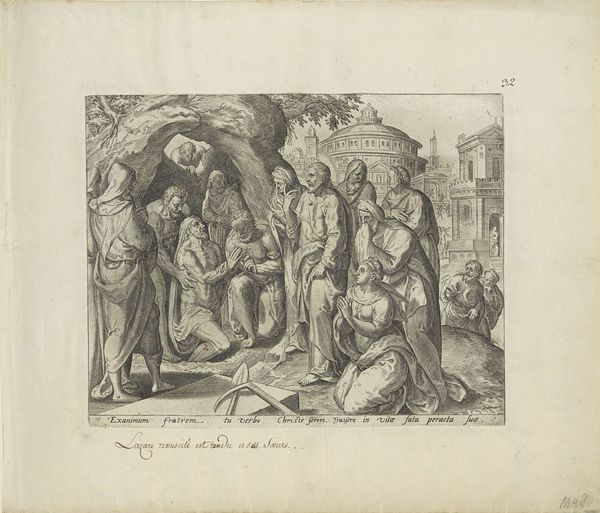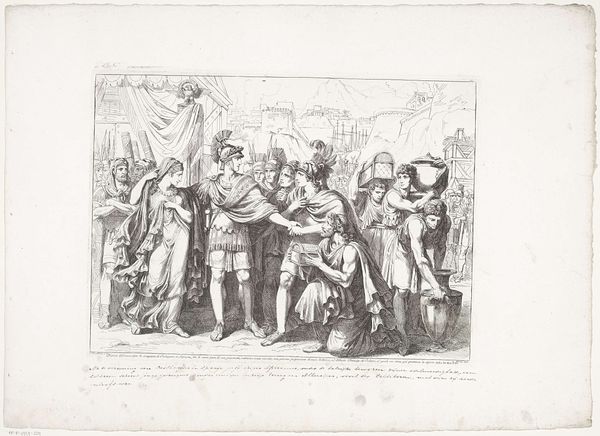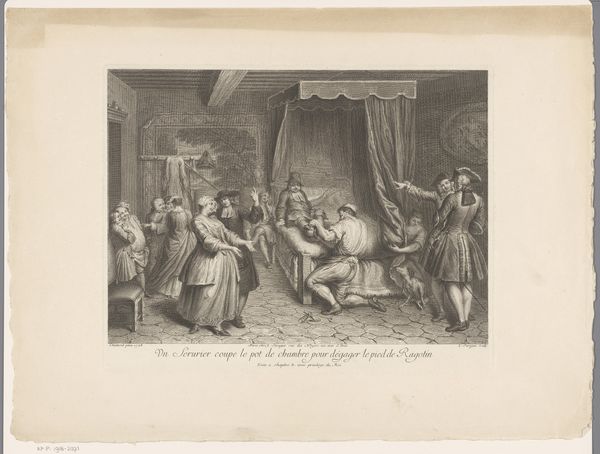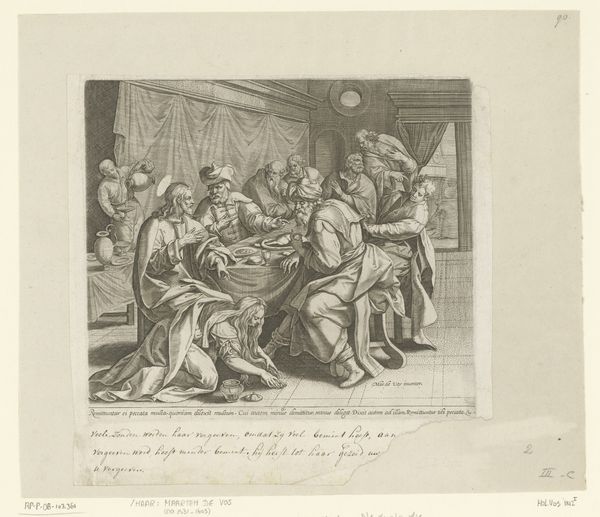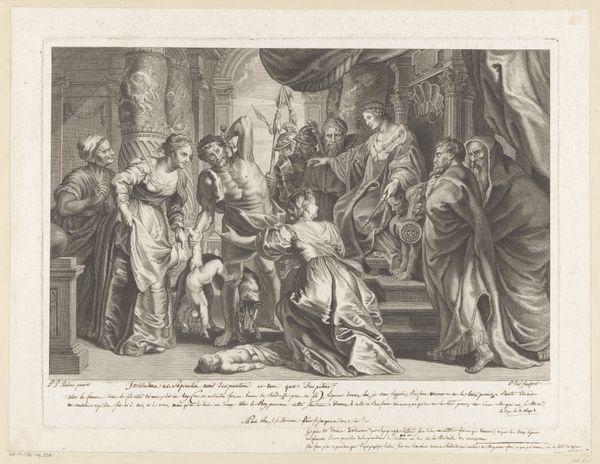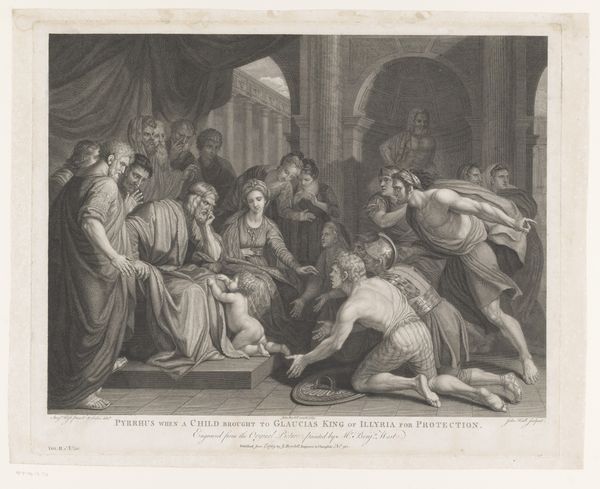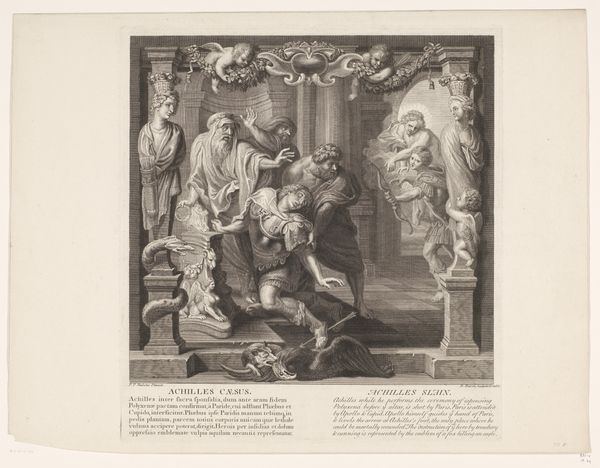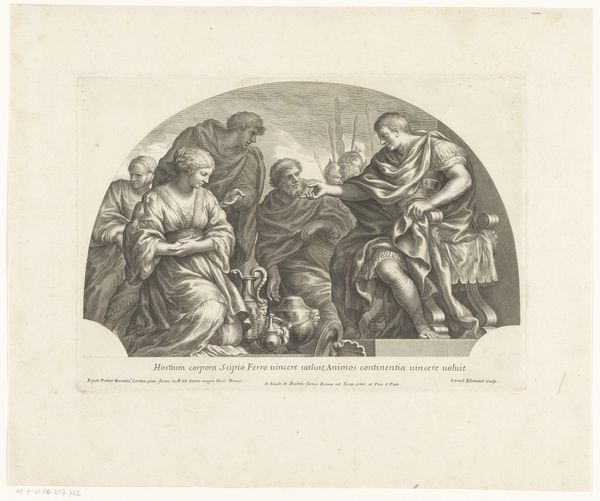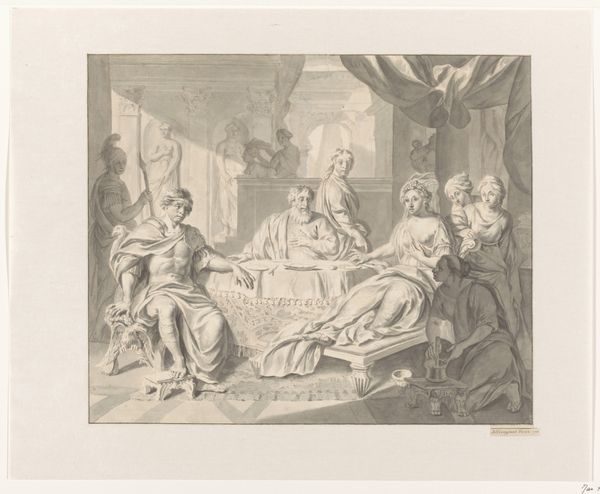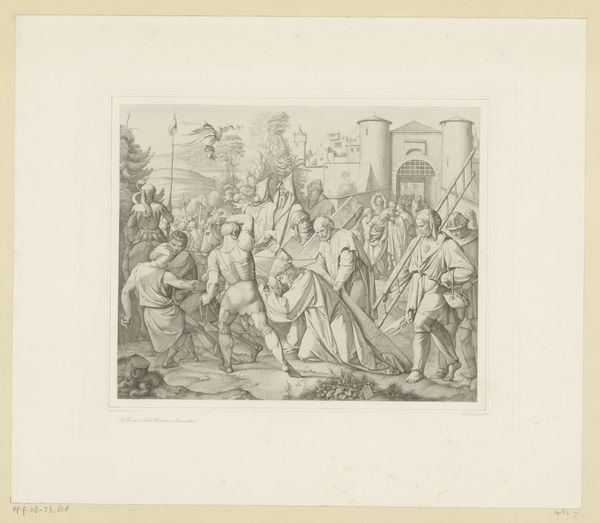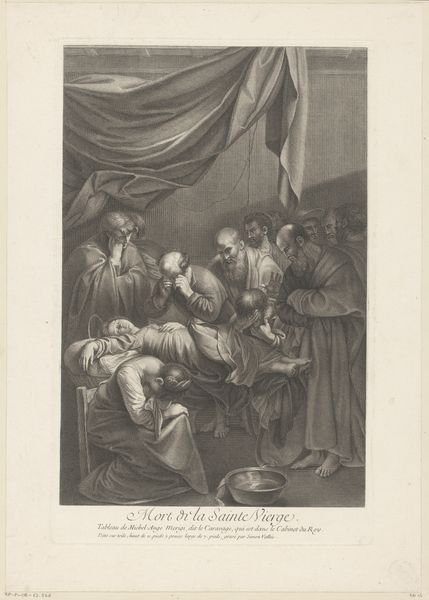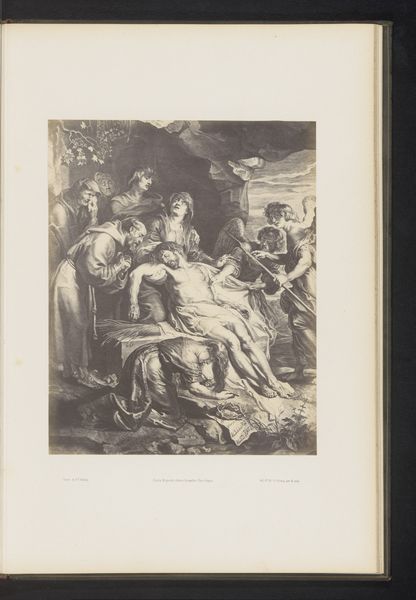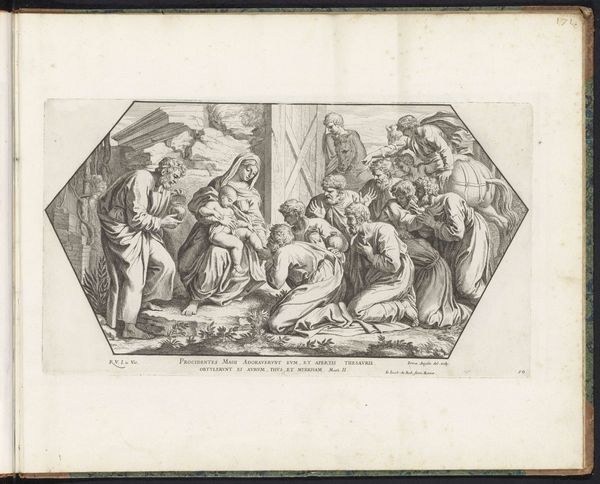
Dimensions: height 207 mm, width 272 mm
Copyright: Rijks Museum: Open Domain
Curator: What strikes me immediately is the somber mood of this scene. There’s a definite weight and stillness to it. Editor: Indeed. We are looking at "Stervende Scipio," or "Dying Scipio," an engraving made in 1782 by Johann Gottlieb Prestel. It’s based on a painting, and the image is rendered on toned paper, giving it a classic, almost sepia-toned look. Curator: The figure of Scipio, surrounded by what appear to be soldiers, dominates the composition. Is it me, or does this image remind you of depositions or entombment scenes? The placement, pose, and encircling figures... It clearly speaks to some cultural language. Editor: Absolutely. Think of Scipio Africanus, a famous Roman general known for his defeat of Hannibal. But seeing him like this, nearing death, really underlines themes of mortality and the fall of heroes. There is a sense of mourning, but also a strange heroism still implied. Curator: Considering the historical context, the engraving serves a public function, doesn't it? To remind viewers of Roman virtues, military power, and perhaps, a subtle warning about the transience of even the greatest empires. I see an implicit commentary about power and legacy here. Editor: Yes, that tension is key. Prestel makes clever use of linear engraving techniques to give texture and depth to his figures, making sure Scipio is still perceived as a celebrated man and fallen warrior at once. Curator: There’s an undeniable theatricality to this work that echoes baroque sensibilities—the dramatic lighting, the expressive gestures. I also observe some contemporary political parallels in depicting dying heroes, depending on when and where this work was displayed or sold. Editor: For me, seeing how such potent symbols shift in meaning over time—that's the most fascinating aspect. Here we see a classical hero filtered through an 18th-century lens, interpreted, printed and then reproduced. How can such iconic images of valor continue to provoke contemplation? Curator: Exactly, the political ramifications of an engraving of "Dying Scipio" speak volumes, far more loudly than it did when it was initially distributed, in a sense. Editor: Looking closer at this image really adds to my understanding of cultural transmission. What do you make of that analysis? Curator: Absolutely compelling! To think about how visual culture transforms not just our sight, but our whole frame of political analysis too.
Comments
No comments
Be the first to comment and join the conversation on the ultimate creative platform.
